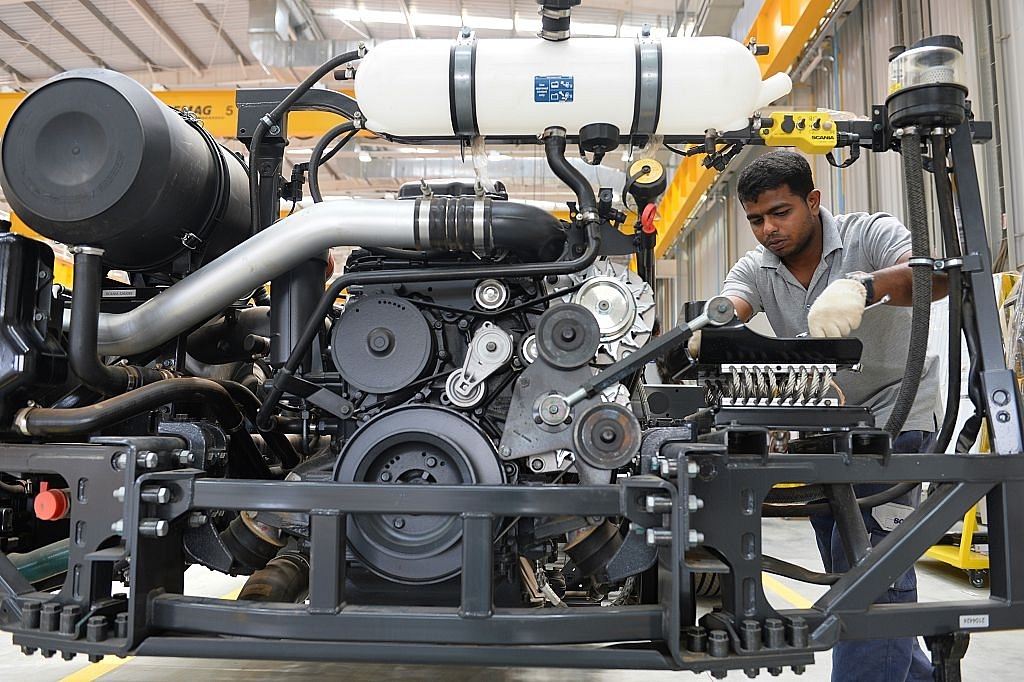Ideas
States Innovation Index: More Action Needed To Broaden The Base
- Politicians and bureaucrats must understand and imbibe the innovation culture. It’s not just about moving up in global rankings, innovation is necessary for India to progress.

A worker assembles a bus at a manufacturing facility in Bengaluru. Photo credit: MANJUNATH KIRAN/AFP/GettyImages
Which state tops the charts in providing the most nurturing atmosphere for innovation – Delhi, Karnataka, Maharashtra or Tamil Nadu?
The fastest finger will immediately light on Karnataka, because of Bengaluru. But the just-released State Innovation Report 2016 ranks Maharashtra first, with a score of 49.32 points, followed by Tamil Nadu (45.62).
The State Innovation Report 2016 has been brought out by the Gurgaon-based Institute for Competitiveness, part of the Harvard Business School’s Institute for Strategy and Competitiveness. The institute has been ranking states on competitiveness; the innovation ranking is a first.
The report notes that the Global Innovation Index 2016 report calls India an innovation out-performer because of its low per capita income, high global innovation score among its peers and being an innovation achiever for three straight years. So, just as some countries do better on innovation than others, the Institute for Competitiveness decided to rank Indian states on similar parameters.
The rankings are based on a three-tier measurement scale, with four pillars (factors of production, demand conditions, industries, innovation and entrepreneurship, and social and political institutions), 10 sub-indices within these and almost 50 indicators within these sub-indices.
Going strictly by scores, Delhi should be ranked third in the index with a score of 40.55, followed by Uttar Pradesh (37.91), but the report groups states according to their innovation stage of development. This was done to avoid possibly unfair comparisons of ranking states regardless of their stage of development. A stage of development is built using 11 indicators of innovation and states are grouped based on their scores in this. They are then ranked on innovation within each of these groups.
So Tamil Nadu, Maharashtra, Karnataka (40.35) and Gujarat (37.70) are ranked first to fourth in the “40 and above” stage of development cluster. Delhi and Uttar Pradesh may score higher than Karnataka and Gujarat, but they fall in the 20-40 stage of development cluster and therefore take the top two places there, followed by Kerala (37.40) and Andhra Pradesh (35.43). In the 10-20 stage of development cluster, Uttarakhand tops with a score of 30.73, followed by Haryana with 30.05.
Some of these scores do boggle the mind – Uttar Pradesh ranking fourth overall, for example – but this clearly is the result of just one or a few hubs of innovation. All innovation in Uttar Pradesh must be concentrated in Noida, though why Hyderabad doesn’t do the same for Andhra Pradesh is a bit puzzling.
But the report clearly brings out the rather skewed innovation atmosphere in the country. Peninsular India seems much better placed than northern India. Clearly, this needs addressing if India is to move further up in global innovation rankings. Apart from the Global Innovation Index, it has moved up consistently in the innovation pillar of the Global Competitiveness Index as well.
The World Bank report pointing out that automation imperils 69 per cent jobs in India would give heft to those who carp about manufacturing getting increasingly capital and technology intensive and less labour intensive. The State Innovation Report acknowledges this conundrum but makes a strong case for ramping up innovation in the manufacturing sector. High-tech manufacturing may be increasing, but the report points out that the share of high-tech manufacturing in total manufacturing is among the lowest in India. The labour versus technology debate can best be resolved, it argues, by small and medium enterprises (SMEs) imbibing innovation as a paradigm, which can unleash a revolution in Indian manufacturing.
For this to happen, the report says, the lack of trust between competing SMEs as well as suppliers needs to be addressed. It suggests adequate mechanisms for trade secret protection and ensuring swift resolution of disputes.
Government policies will have to deal with this. The report finds that barring Karnataka, which has a policy on IT, ITES, innovation and incentives apart from an industrial policy, most other states with high scores deal with innovation as part of their respective industrial policies. It points out that while there is little to complain on the policy front, implementation is a problem area. Besides, there are also policy revisions with changes in government and this creates uncertainty. It also notes that few state level industrial policies adopt a holistic approach, linking science and technology, research and development, education and industrial policies.
Clearly, politicians and bureaucrats both need to understand and imbibe the innovation culture. It’s not just about moving up in global rankings, innovation is necessary for India to progress.
Support Swarajya's 50 Ground Reports Project & Sponsor A Story
Every general election Swarajya does a 50 ground reports project.
Aimed only at serious readers and those who appreciate the nuances of political undercurrents, the project provides a sense of India's electoral landscape. As you know, these reports are produced after considerable investment of travel, time and effort on the ground.
This time too we've kicked off the project in style and have covered over 30 constituencies already. If you're someone who appreciates such work and have enjoyed our coverage please consider sponsoring a ground report for just Rs 2999 to Rs 19,999 - it goes a long way in helping us produce more quality reportage.
You can also back this project by becoming a subscriber for as little as Rs 999 - so do click on this links and choose a plan that suits you and back us.
Click below to contribute.
Latest